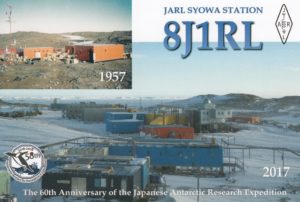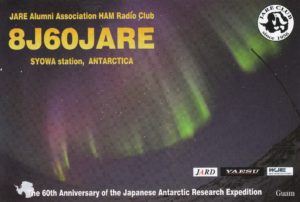 The story of Japan’s involvement in the Antarctic goes back to 1955, when it announced at a special committee on the International Geophysical Year in Brussels that it planned to begin research in the region.
The story of Japan’s involvement in the Antarctic goes back to 1955, when it announced at a special committee on the International Geophysical Year in Brussels that it planned to begin research in the region.
On November 8, 1956, Japan’s first Antarctic research ship “Soya” departed from Harumi Terminal of Tokyo port, carrying the first Japanese Antarctic Research Expedition (JARE) Team, consisting of fifty-three members.
Seventeen members of the Team landed on Ongul Islands. They selected the place for the Main base for their expedition and named it “Syowa Station”.
Since then, scientific research have been carried out for more than sixty years involving about 3,400 members so far.
On January 29, 2017, the Japanese research Base “Syōwa Station” (WAP JPN-Ø3) did celebrate 60 years since its opening.
A sixtieth birthday is a landmark date in the life of any person or institution. Over the course of those six decades, Japan has steadily carried out scientific research in Antarctica, publishing numerous results. These include many new discoveries that no one could have predicted when work began in Antarctica, as well as a number of important clues for predicting the future of the global environment. 
2017 did mark this important anniversary! Thanks to Yath Yoshikawa (JG2MLI) the official station 8J1RL was again on the air from Jan.1-2017 through Jan.20-2018 at SYOWA Station (WAP JPN-Ø3).
In addition to 8J1RL Yath did operate also with the special callsign “8J6ØJARE“. After a year in Antarctica, now Yath is back home and we just got the QSLs for the contacts made.
Great job Yath, thanks a lot!
TNX: JG2MLI/8J1RL-8J6ØJARE
Read more at: https://www.nippon.com/en/currents/d00249/
